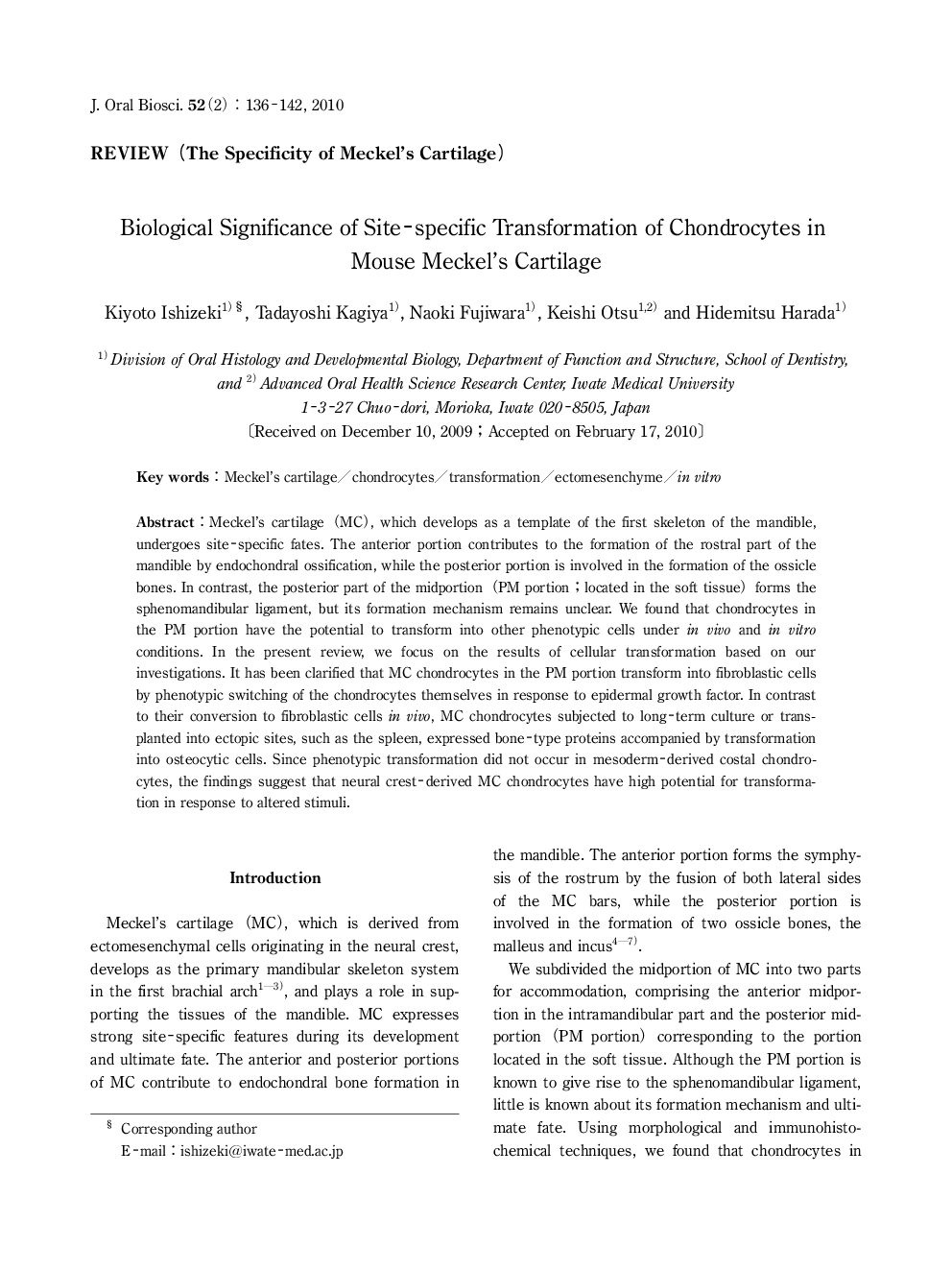| Article ID | Journal | Published Year | Pages | File Type |
|---|---|---|---|---|
| 2776977 | Journal of Oral Biosciences | 2010 | 7 Pages |
Meckel's cartilage (MC), which develops as a template of the first skeleton of the mandible, undergoes site-specific fates. The anterior portion contributes to the formation of the rostral part of the mandible by endochondral ossification, while the posterior portion is involved in the formation of the ossicle bones. In contrast, the posterior part of the midportion (PM portion; located in the soft tissue) forms the sphenomandibular ligament, but its formation mechanism remains unclear. We found that chondrocytes in the PM portion have the potential to transform into other phenotypic cells under in vivo and in vitro conditions. In the present review, we focus on the results of cellular transformation based on our investigations. It has been clarified that MC chondrocytes in the PM portion transform into fibroblastic cells by phenotypic switching of the chondrocytes themselves in response to epidermal growth factor. In contrast to their conversion to fibroblastic cells in vivo, MC chondrocytes subjected to long-term culture or transplanted into ectopic sites, such as the spleen, expressed bone-type proteins accompanied by transformation into osteocytic cells. Since phenotypic transformation did not occur in mesoderm-derived costal chondrocytes, the findings suggest that neural crest-derived MC chondrocytes have high potential for transformation in response to altered stimuli.
